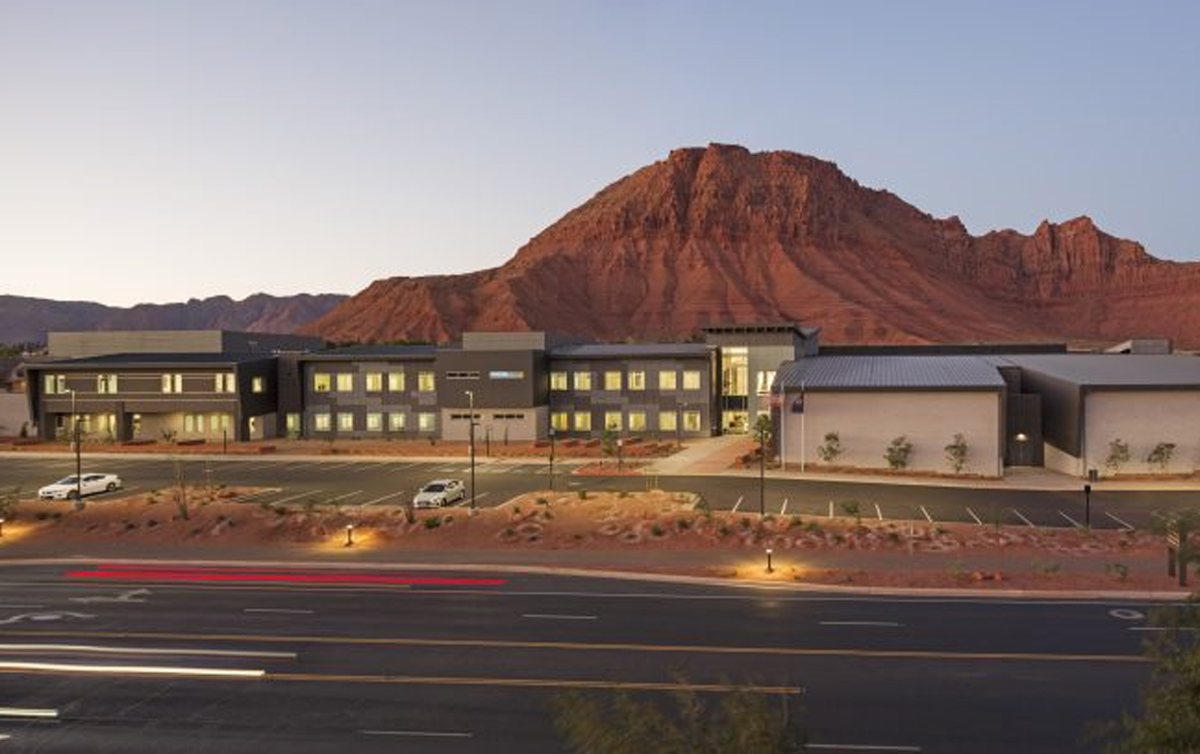
Ivins, Rocky Vista University aim to improve nighttime health and safety
By Mike Scott
The Ivins City Council took groundbreaking action in improving nighttime health and safety for Ivins residents with changes to its outdoor lighting ordinance after receiving an overview of the recommendations for changes to the city’s Outdoor Lighting Ordinance from the Ivins Night Sky Initiative.
The city now requires that the maximum color temperature for all new outdoor commercial lighting is 3,000 degrees Kelvin, down from 4,000. But more importantly, these new lights will be required to add amber filters the city designed that effectively eliminate almost all the blue light emitted by LEDs that create safety and health problems.
Rocky Vista University College of Osteopathic Medicine is going even further. The city’s new requirements only affect new construction, but the college has begun a study sponsored by the Ivins Night Sky Initiative to see if these new requirements can be effectively retrofitted into existing lighting while continuing to meet the university’s need to provide nighttime safety for their students. The study will also look for a solution to another problem magnified by LEDs: unwanted glare.
The city has long required outdoor lighting to be fully shielded, meaning that light fixtures can’t aim light up into the sky. But even fully shielded fixtures send light out horizontally as well as downward. That not only wastes light by sending it where it isn’t needed but it also creates a glare problem.
Rocky Vista’s study will help others determine the feasibility of retrofitting their own lighting to reduce blue light and glare. It will also help the city in its efforts to get designated as a Dark Sky Community by the International Dark Sky Association.
What’s the big deal?
LED lighting is quickly replacing High Pressure Sodium lights and other older technologies because LEDs are so much more energy efficient. You can easily spot the difference. The older technologies produce a softer, warmer, and more comfortable light compared to the bright white light from LEDs. That’s because LEDs emit a lot of blue light while the older technologies emit very little, if any, blue light.
Blue light rays have short wavelengths just above ultraviolet light. We’ve known for a long time that ultraviolet light can be harmful. It can burn. That’s why we wear sunscreen. We’re learning that too much blue light can also be harmful:
—The blue part of the light spectrum is responsible for creating most of the glare we see. Glare constricts your pupils, diminishing your eyes’ ability to adapt to low-light conditions, like nighttime.
—Scientists are just beginning to understand the negative impacts on health, including blue light’s contribution to cardiovascular disease, sleep, metabolic and immunological disorders, obesity, cancer, macular degeneration, glaucoma, and more.
—Blue light is disruptive to plants, animals, and crop pollination.
How does the Ivins solution work?
Ivins has found a way to use LED technology but take out most of the blue light. That eliminates the added health and safety risks from LEDs compared to older technologies and results in a warmer, more pleasing light.
How the Ivins amber anti-blue filter works
For more information about the progress of this study, blue-light health and safety issues, or other information about outdoor lighting, contact the Ivins Night Sky Initiative at info@ivinsnightsky.org or visit ivinsnightsky.org. The Ivins Night Sky Initiative is a 100 percent volunteer, nonprofit, 501(c)(3) tax-exempt, citizen organization. Also visit the International Dark Sky Association’s website at darksky.org. For more information regarding Rocky Vista University College of Osteopathic Medicine please visit the website at rvu.edu.
Articles related to “Ivins, Rocky Vista University aim to improve nighttime health and safety”
Ivins Night Sky Initiative launches to address light pollution



